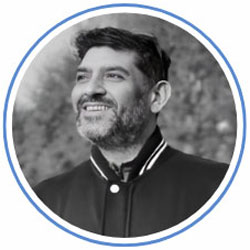As a part of my work, we end up working with senior management in the space of executive and leadership presence. I would skip my reservations in the usage of this verbiage but the following are the various aspects that I end up demonstrating and speaking on:
- Posture
- Suspension of the spine
- Not leading with the chin
A lot of people feel that thrusting their chest out and throwing their shoulders back is “straight” or “confident”. A lot of people, mostly without even realising, feel in power or in a position of authority, when their chin is raised.
These are detrimental to your health and well being.
1. A good posture involves having a relaxed appearance and a relaxed/ neutral spine. A good way to determine your posture is to stand with your feet not too wide but as wide as your shoulders. Allow your arms to rest comfortably by your side. For some, it may feel that having the arms rest comfortably on the side appears as slouching. Remember your body is not slouching till it is slouching. You have to notice the three natural curves: a small hollow curve at the base of the neck, a small rounded-ness in the middle of the back and a small hollow curve at the base of the back. This is the neutral spine. Another good exercise to align your posture is to stand with your feet together, an inch away from a wall. Slowly move your back closer to the wall. If your shoulders or your buttocks are touching the wall together, your posture is aligned. If it is not, you would need to make adjustments. Use a mirror to observe yourself. Remember, the human body has memories besides the one in the brain. You should start talking to your body. The body listens, always!
2. Leading with the chin looks stupid. It looks like someone is pulling you by the chin and giving you a false sense of power. A lot of people, especially, in the corporate sector, as they start growing, automatically start pushing their chin up. They may want to show authority, power, flaunt their designation but all it does is make you look like a twisted and contorted wannabe. A good way of correcting this anomaly is to stand and putting your hand on the bridge of the nose, creating a 90 degree right angle. Your chin is straight and aligned when you are able to look up 45 degrees without moving your neck. This bifurcation of the right angle is important. If you need to look further up is when you move your neck. But always come back to the bifurcated angle to realign your vision. You may feel, when you practice this, that you are looking down. You aren’t. Practice this for 3 days and it should get into your muscle memory.
3. Suspension of the spine: You may not notice it always but a lot of us end up contracting our torso. It could be because of physical, mental or emotional fatigue. Over a period of time, the torso contracts and doesn’t understand straightening up. Besides the horrible physical symptoms that a contorted torso brings, it also kills your presence. A lot of confidence issues creep in, as I have noticed, over an extended period of time. Peoples responses to you may deteriorate, your communication may seem ineffective. Whilst your verbal communication is dependent on what you are saying, there is a lot happening by the way you present yourself. 12 years back as I was doing a course in the Alexander technique, my teacher told me to walk as if the clouds are touching my crown (top of the head). As I practiced that day in and day out, i realized that i suddenly started appearing LARGER, to myself. My presence was becoming larger, peoples responses to me became more inviting. This largeness was not intimidating, neither for me nor my audience or the people i was interacting with.
You will need to practice, practice and practice. There are no short cuts. There are no tricks and techniques. Knowledge needs to percolate into the body for it to become a reality. This finding is corroborated by Miyamoto Musashi’s “Book of Five Rings” – each principle is followed by the advice to “investigate this thoroughly” through practice rather than trying to learn by merely reading.
 Vikram Badhwar, CEO, Syngrity, is a communications coach, an experiential educator, and an artist trying to bridge the gap between the creative and the analytical side of our brain. He consults individuals and teams in the space of learning & development to enable transformations at a personal, professional and organizational level.
Vikram Badhwar, CEO, Syngrity, is a communications coach, an experiential educator, and an artist trying to bridge the gap between the creative and the analytical side of our brain. He consults individuals and teams in the space of learning & development to enable transformations at a personal, professional and organizational level.







 MALATI VASUDEVA
MALATI VASUDEVA VIKRAM BADHWAR
VIKRAM BADHWAR PRIYANKA KUMAR
PRIYANKA KUMAR SUMAL VARGHESE
SUMAL VARGHESE














